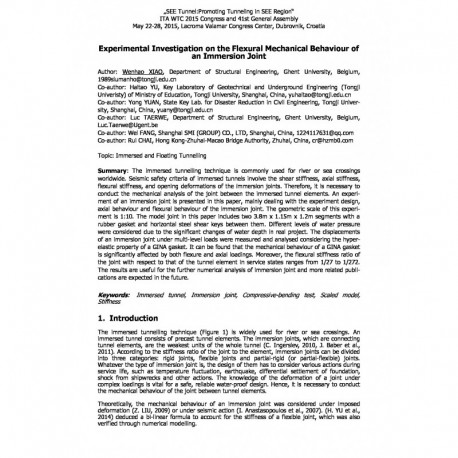Cart
0
0
No document
0,00 €
Total
Document successfully added to your shopping cart
Quantity
Total
There are 0 items in your cart.
There is 1 item in your cart.
Total documents
Total shipping
To be determined
Total
Search & filter
Search for a publication
Search & filter

Experimental Investigation on the Flexural Mechanical Behaviour of an Immersion Joint
wtc2015_full_xiao
Y. Yuan / W. Xiao / H. Yu / L. Taerwe / W. Fang / R. Chai
The immersed tunnelling technique (Figure 1) is widely used for river or sea crossings. An immersed tunnel consists of precast tunnel elements. The immersion joints, which are connecting tunnel elements, are the weakest units of the whole tunnel (C. Ingerslev, 2010, J. Baber et al., 2011). According to the stiffness ratio of the joint to the element, immersion joints can be divided into three categories: rigid joints, flexible joints and partial-rigid (or partial-flexible) joints. Whatever the type of immersion joint is, the design of them has to consider various actions during service life, such as temperature fluctuation, earthquake, differential settlement of foundation, shock from shipwrecks and other actions. The knowledge of the deformation of a joint under complex loadings is vital for a safe, reliable water-proof design. Hence, it is necessary to conduct the mechanical behaviour of the joint between tunnel elements. Theoretically, the mechanical behaviour of an immersion joint was considered under imposed deformation (Z. LIU, 2009) or under seismic action (I. Anastasopoulos et al., 2007). (H. YU et al., 2014) deduced a bi-linear formula to account for the stiffness of a flexible joint, which was also verified through numerical modelling.


